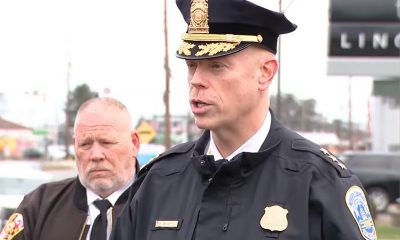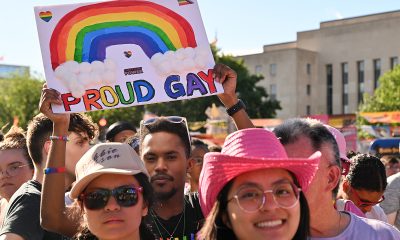Arts & Entertainment
Local gay coaches find support from students, parents
‘Building trust holds the relationship together’

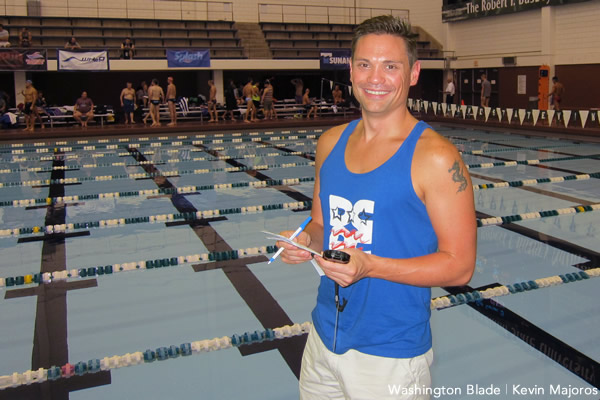
Brendan Roddy began coaching swimming at age 14 and currently coaches at an area high school. (Washington Blade photo by Kevin Majoros)
With the LGBT sports movement receiving more national media attention over the past several years, there have been multiple headlines about coaches coming out as gay to their teams. Some of the names that have made the news are high school basketball coach Anthony Nicodemo in Philadelphia and high school track coach Micah Porter of Denver.
In the D.C. metro area, there are a number of LGBT coaches who have been instructing straight athletes for years, even decades. When asked what the obstacles have been for them, the answers offer some surprises.
The relationship between a coach and an athlete is a special one and often the coach becomes a surrogate parent to the athlete and a good friend to the athlete’s family. The announcements of the above mentioned coaches certainly prompted many to wonder if the relationship between a coach and an athlete is different if a gay coach is instructing a group of straight athletes.
Brendan Roddy began swimming competitively at age 11 and continued to do so through college at Salisbury State University. As a 14-year-old he became a junior swim coach for Rockville Montgomery Swim Club and then coached at Salisbury State University during grad school.
After returning to the area as a teacher at Churchill High School, Roddy realized he missed coaching and became the swimming and diving coach at the high school.
“Parents that are ‘with it’ caught on quickly that I was gay,” says Roddy. “The others figured it out eventually. The kids would generally test the waters with pronouns when asking about my personal life. If they asked directly, I would tell them.”
Roddy says that his sexual orientation rarely comes up in conversations with his athletes or their parents and it has never stood in the way of his coaching.
“Building a level of trust and respect is what holds the athlete/coach relationship together,” says Roddy. “It is amazing how much kids have evolved over the past decade. The smiles on their faces are what keeps me in it.”
Jeff Nolt began his figure skating career in New York and as it progressed, trained in Pennsylvania and Delaware. In the early 1980s, he qualified for nationals as a pairs team with his sister Susan. Following their retirement from competitive skating, they performed in the Ice Capades for two years.
Nolt started coaching in Syracuse and eventually his work brought him to the Baltimore/Washington area. His students range in age from six to 60.
“The parents of my students trust who I am and there is no fear of me being gay,” Nolt says. “The bottom line is that I get paid to teach people how to skate choreographically and technically correct. Kids can smell you a mile away; if you are unprepared and have doubts about yourself, the respect and trust will never come.”
He adds, “I like being a mentor. It is exciting to know that I can have an impact on someone’s life and it is important for me to give back what I have learned.”
Sami Holtz grew up in Montgomery County and began competing in soccer and swimming at age eight. She eventually changed over to softball and took on rugby during her college years at Johnson and Wales and Springfield College. She also played full-contact football in the Independent Women’s Football League.
She began coaching swimming in New England, which led to a coaching position in the Montgomery County Swim League in 2007. She is now coaching swimming at Forest Knolls and the Silver Spring YMCA.
“In the community I work in, nobody cares that I am gay,” says Holtz. “The only discrimination I have encountered was related to my religious beliefs.”
Holtz says that one of her swimmers has two moms and another teenage swimmer recently came out as gay.
“His mother thought it would be nice if we connected at Capital Pride this past June,” Holtz says laughing.
Akil Patterson was a three-sport, all-state athlete during his years at Frederick High School and went on to play football at the University of Maryland. He left the Terps and played two years at California University of Pennsylvania.
He later played for the United Indoor Football League. After an Arena Football tryout his weight ballooned to 380 pounds and he ended up back on the University of Maryland campus where a wrestling coach asked him to work with their heavyweights.
He went on to become a coach with the Terps wrestling program and the Terrapin Wresting Club (TWC). The TWC provides training and competitive opportunities for the wrestling community and for post-collegiate wrestlers who have international aspirations. They are an official Regional Olympic Training Center of USA Wrestling.
Patterson coaches athletes who range in age from 13 to 22 and says that his sexual orientation is also a non-issue.
“I know that some people trash talk me behind my back for being gay, but I am not ashamed and I am not shy,” says Patterson. “Anyone that knows me knows that I am all about the athletes. I love my kids.”
Patterson has developed trusting and respectful relationships with his athletes and their families over the years. He has been asked by parents to step in when their children are not doing well in school.
“I have an athlete whose father is with the U.S. Marshals and he volunteered to speak at diversity training for the Marshals,” says Patterson. “When he stepped up to the microphone he simply stated; my son loves his coach and my son looks up to his coach.”
Patterson adds, “I believe that one’s sexuality transcends sports.”
Arts & Entertainment
2026 Most Eligible LGBTQ Singles nominations
We are looking for the most eligible LGBTQ singles in the Washington, D.C. region.

Are you or a friend looking to find a little love in 2026? We are looking for the most eligible LGBTQ singles in the Washington, D.C. region. Nominate you or your friends until January 23rd using the form below or by clicking HERE.
Our most eligible singles will be announced online in February. View our 2025 singles HERE.
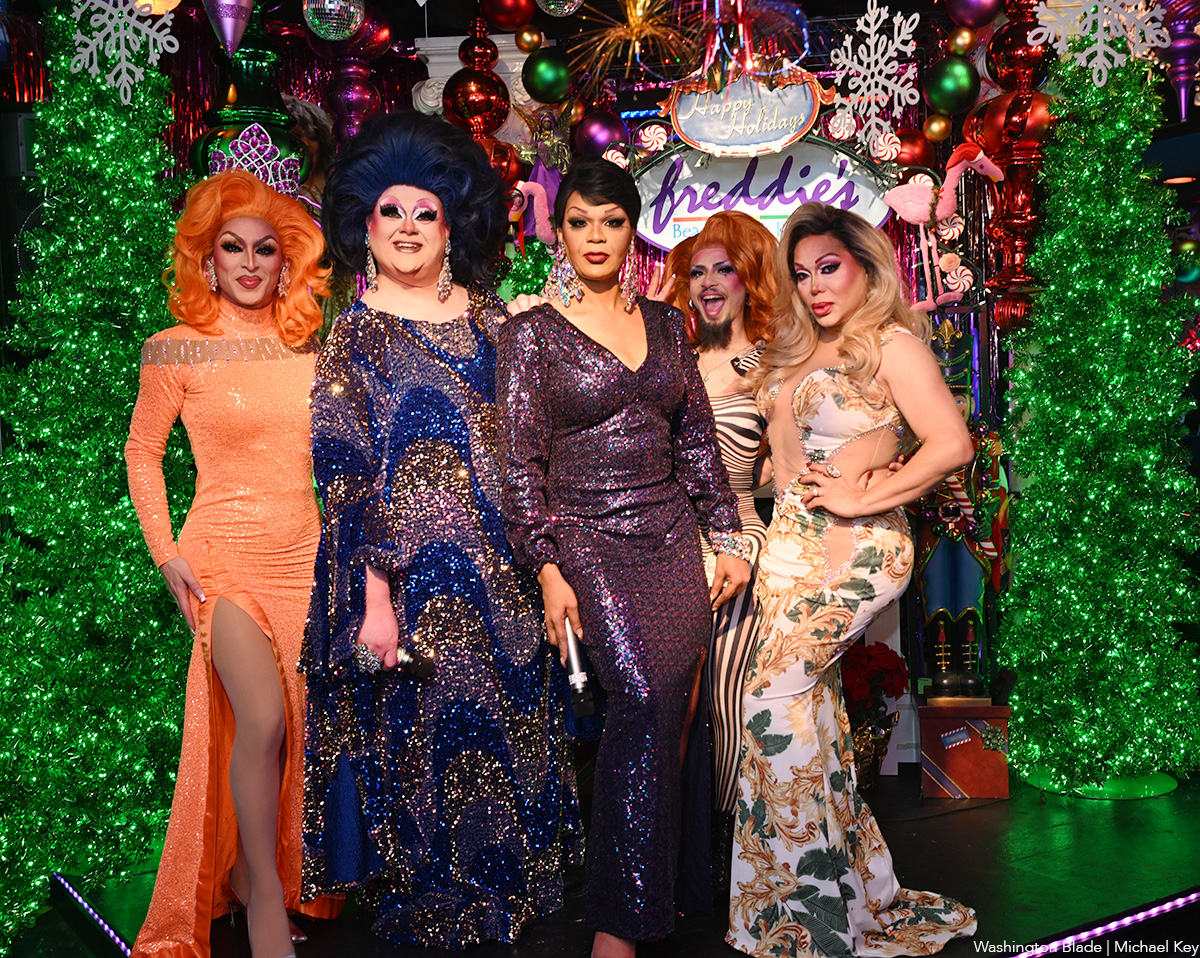
The Freddie’s Follies drag show was held at Freddie’s Beach Bar in Arlington, Va. on Saturday, Jan. 3. Performers included Monet Dupree, Michelle Livigne, Shirley Naytch, Gigi Paris Couture and Shenandoah.
(Washington Blade photos by Michael Key)

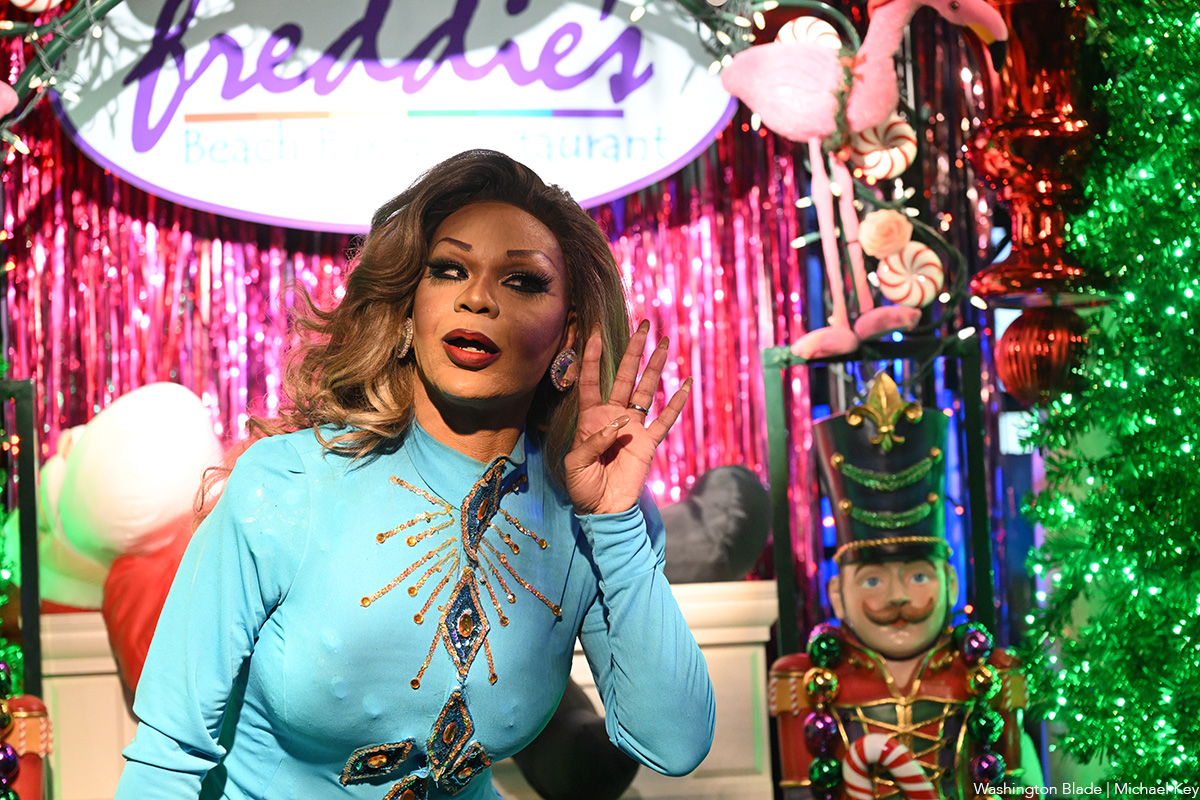





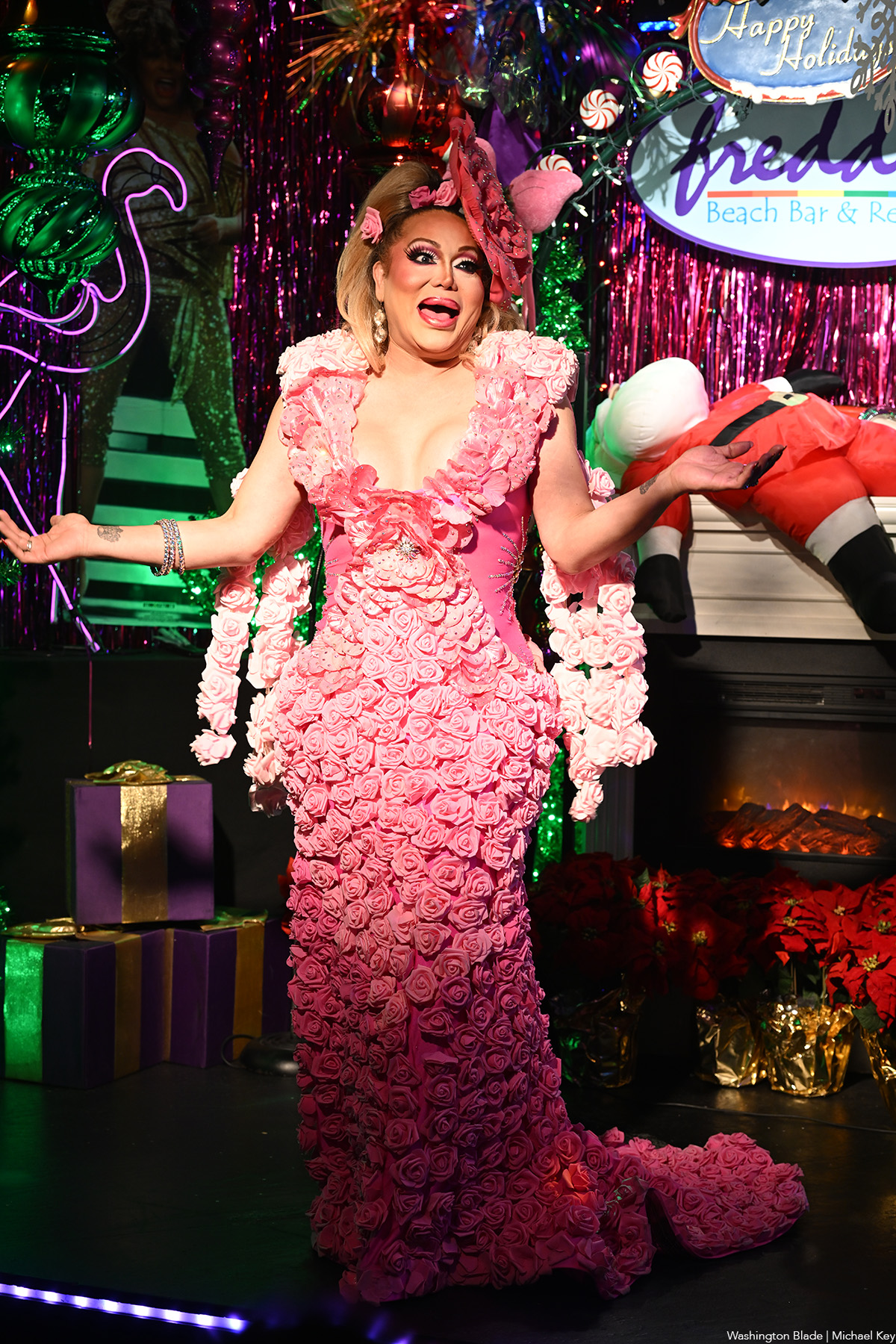
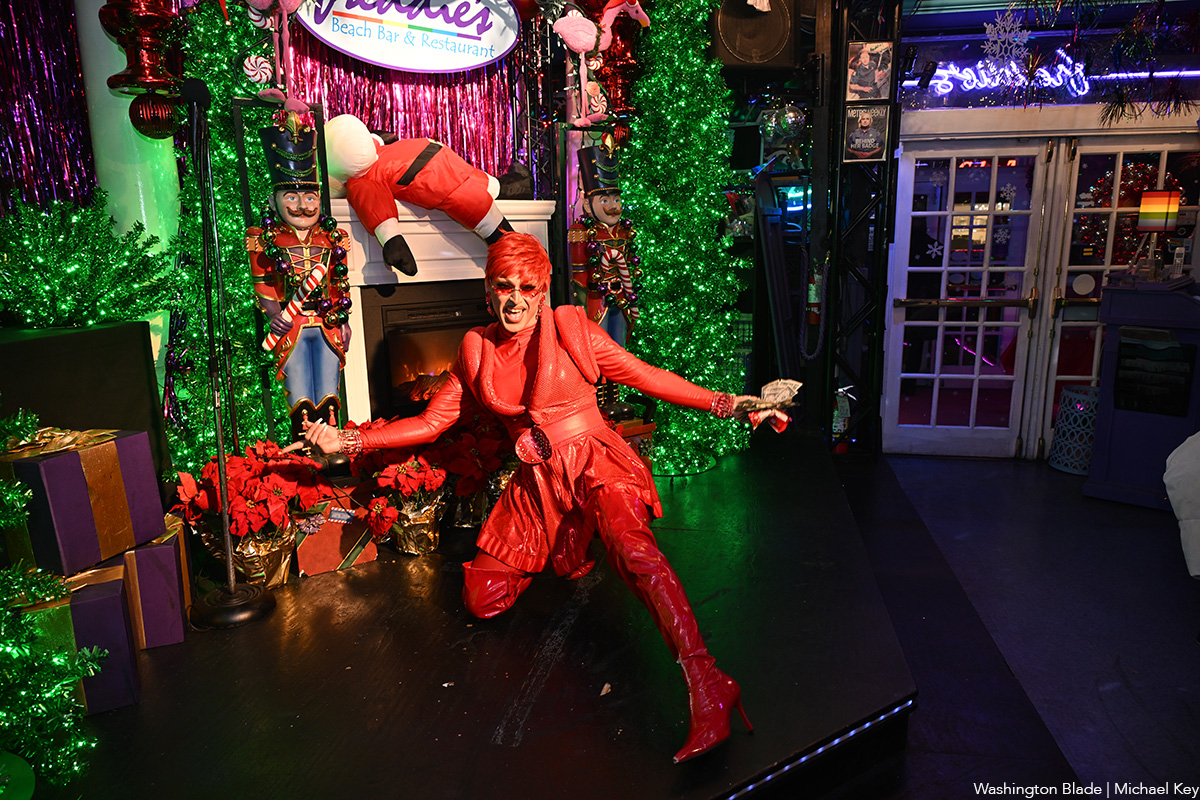

a&e features
Queer highlights of the 2026 Critics Choice Awards: Aunt Gladys, that ‘Heated Rivalry’ shoutout and more
Amy Madigan’s win in the supporting actress category puts her in serious contention to win the Oscar for ‘Weapons’

From Chelsea Handler shouting out Heated Rivalry in her opening monologue to Amy Madigan proving that horror performances can (and should) be taken seriously, the Critics Choice Awards provided plenty of iconic moments for queer movie fans to celebrate on the long road to Oscar night.
Handler kicked off the ceremony by recapping the biggest moments in pop culture last year, from Wicked: For Good to Sinners. She also made room to joke about the surprise hit TV sensation on everyone’s minds: “Shoutout to Heated Rivalry. Everyone loves it! Gay men love it, women love it, straight men who say they aren’t gay but work out at Equinox love it!”
The back-to-back wins for Jacob Elordi in Frankenstein and Amy Madigan in Weapons are notable, given the horror bias that awards voters typically have. Aunt Gladys instantly became a pop culture phenomenon within the LGBTQ+ community when Zach Cregger’s hit horror comedy released in August, but the thought that Madigan could be a serious awards contender for such a fun, out-there performance seemed improbable to most months ago. Now, considering the sheer amount of critics’ attention she’s received over the past month, there’s no denying she’s in the running for the Oscar.
“I really wasn’t expecting all of this because I thought people would like the movie, and I thought people would dig Gladys, but you love Gladys! I mean, it’s crazy,” Madigan said during her acceptance speech. “I get [sent] makeup tutorials and paintings. I even got one weird thing about how she’s a sex icon also, which I didn’t go too deep into that one.”
Over on the TV side, Rhea Seehorn won in the incredibly competitive best actress in a drama series category for her acclaimed performance as Carol in Pluribus, beating out the likes of Emmy winner Britt Lower for Severance, Carrie Coon for The White Lotus, and Bella Ramsey for The Last of Us. Pluribus, which was created by Breaking Bad’s showrunner Vince Gilligan, has been celebrated by audiences for its rich exploration of queer trauma and conversion therapy.
Jean Smart was Hack’s only win of the night, as Hannah Einbinder couldn’t repeat her Emmy victory in the supporting actress in a comedy series category against Janelle James, who nabbed a trophy for Abbott Elementary. Hacks lost the best comedy series award to The Studio, as it did at the Emmys in September. And in the limited series category, Erin Doherty repeated her Emmy success in supporting actress, joining in yet another Adolescence awards sweep.
As Oscar fans speculate on what these Critics Choice wins mean for future ceremonies, we have next week’s Golden Globes ceremony to look forward to on Jan. 11.
-

 Photos4 days ago
Photos4 days agoThe year in photos
-

 Sponsored3 days ago
Sponsored3 days agoSafer Ways to Pay for Online Performances and Queer Events
-

 District of Columbia2 days ago
District of Columbia2 days agoTwo pioneering gay journalists to speak at Thursday event
-

 a&e features2 days ago
a&e features2 days agoQueer highlights of the 2026 Critics Choice Awards: Aunt Gladys, that ‘Heated Rivalry’ shoutout and more

